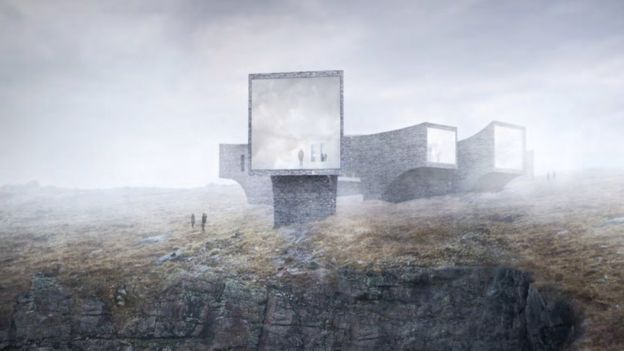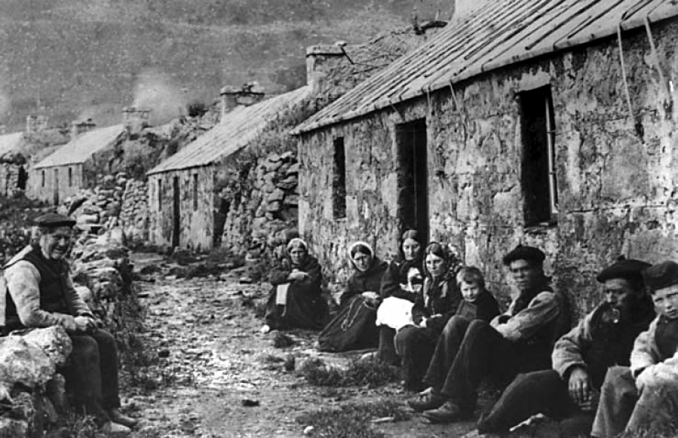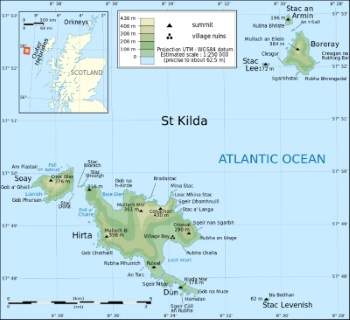Visitor centre celebrating the unique Scottish islands of St Kilda to be built on Lewis
St Kilda (Scottish Gaelic: Hiort) is an isolated volcanic archipelago and the westernmost islands of the Outer Hebrides (Scottish Gaelic: Na h-Eileanan Siar). Noted for its spectacular landscapes the archipelago comprises the islands of Hirta, Dun, Soay and Boreray. A community has existed in the extreme conditions that exist on St Kilda for at least 4,000 years. The evidence of which is found in the remains of built structures and field systems, the cleits (unique stone storage buildings) and the traditional Highland stone houses. Items pointing to Neolithic settlement have been found including shards of pottery and tools.
Life was not easy for those who dwelt on the islands who had to eke out a living by means of a subsistence economy based on the products of birds, agriculture and sheep farming. St Kilda has been described as the ‘islands at the edge of the world.’ However, for all of the hardship the islands have a spectacular beauty, with some of the highest cliffs in Europe. Along with sea stacks that stand in columns out of the sea, the cliffs rise dramatically above the stormy waters of the Atlantic Ocean. They echo to the cries of hundreds of thousands of seabirds. and have large colonies of rare and endangered species of birds, especially puffins and gannets.
In fact, with nearly one million seabirds present at the height of the breeding season, St Kilda supports the largest seabird colony in the north-east Atlantic. The St Kilda wren and St Kilda field mouse are endemic subspecies to the islands. Two different early sheep types have also survived on these remote islands, the Soay, a Neolithic type, and the Boreray, an Iron Age type. Permanent human occupation came to an end with the evacuation, on 29 August 1930, of the remaining 36 islanders who voted to leave St Kilda as their way of life was no longer sustainable.
The National Trust for Scotland (Scottish Gaelic: Urras Nàiseanta na h-Alba) owns the entire archipelago. It is a United Nations Educational, Scientific and Cultural Organization (UNESCO) World Heritage Site, one of only 39 in the world. It is possible to visit St Kilda and information can be found on the National Trust for Scotland website. Now a visitor centre dedicated to the remote St Kilda archipelago is to be built on Ùig in the west of Lewis (Scottish Gaelic: Leòdhas) about 41 miles (66km) east of St Kilda. A Chiad Cheum is being built here as construction on St Kilda's main island, Hirta, was ruled out because bad weather can restrict access to the islands. The project is being led by Ionad Hiort Ltd (The St Kilda Centre company) and will be undertaken in phases. The first phase will cost £2m and subsequent funding being sought for further phases is estimated to come to a total cost of £5.5m. Norwegian architect Reiulf Ramstad has been working with Skye and Glasgow-based architects Dualchas on the designs.
Images: Concept design for new centre courtesy of Reiulf Ramstad and Dualchas.
St Kildans photograph taken in 1886 courtesy of National Trust for Scotland.
St Kilda map








